- Unity User Manual (2018.2)
- Графика
- Справка по графическим возможностям
- Shader Reference
- Writing Surface Shaders
- Surface Shader lighting examples
Surface Shader lighting examples
This page provides examples of custom Surface Shader lighting models in Surface Shaders. For more general Surface Shader guidance, see Surface Shader Examples.
Because Deferred Lighting does not play well with some custom per-material lighting models, most of the examples below make the shaders compile to Forward Rendering only.
Diffuse
The following is an example of a shader that uses the built-in Lambert lighting model:
Shader "Example/Diffuse Texture" {
Properties {
_MainTex ("Texture", 2D) = "white" {}
}
SubShader {
Tags { "RenderType" = "Opaque" }
CGPROGRAM
#pragma surface surf Lambert
struct Input {
float2 uv_MainTex;
};
sampler2D _MainTex;
void surf (Input IN, inout SurfaceOutput o) {
o.Albedo = tex2D (_MainTex, IN.uv_MainTex).rgb;
}
ENDCG
}
Fallback "Diffuse"
}
Here’s how it looks like with a Texture and without a Texture, with one directional Light in the Scene:

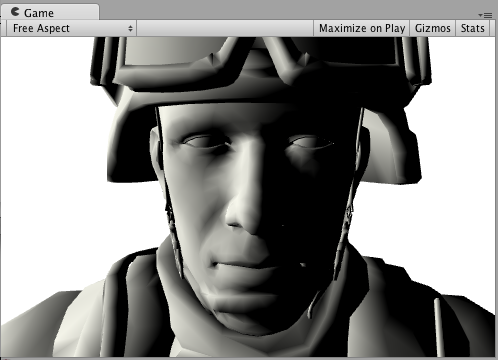
The following example shows how to achieve the same result by writing a custom lighting model instead of using the built-in Lambert model.
To do this, you need to use a number of Surface Shader lighting model functions. Here’s a simple Lambert one. Note that only the CGPROGRAM section changes; the surrounding Shader code is exactly the same:
Shader "Example/Diffuse Texture" {
Properties {
_MainTex ("Texture", 2D) = "white" {}
}
SubShader {
Tags { "RenderType" = "Opaque" }
CGPROGRAM
#pragma surface surf SimpleLambert
half4 LightingSimpleLambert (SurfaceOutput s, half3 lightDir, half atten) {
half NdotL = dot (s.Normal, lightDir);
half4 c;
c.rgb = s.Albedo * _LightColor0.rgb * (NdotL * atten);
c.a = s.Alpha;
return c;
}
struct Input {
float2 uv_MainTex;
};
sampler2D _MainTex;
void surf (Input IN, inout SurfaceOutput o) {
o.Albedo = tex2D (_MainTex, IN.uv_MainTex).rgb;
}
ENDCG
}
Fallback "Diffuse"
}
This simple Diffuse lighting model uses the LightingSimpleLambert function. It computes lighting by calculating a dot product between surface normal and light direction, and then applying light attenuation and color.
Diffuse Wrap
The following example shows Wrapped Diffuse, a modification of Diffuse lighting where illumination “wraps around” the edges of objects. It’s useful for simulating subsurface scattering effects. Only the CGPROGRAM section changes, so once again, the surrounding Shader code is omitted:
...ShaderLab code...
CGPROGRAM
#pragma surface surf WrapLambert
half4 LightingWrapLambert (SurfaceOutput s, half3 lightDir, half atten) {
half NdotL = dot (s.Normal, lightDir);
half diff = NdotL * 0.5 + 0.5;
half4 c;
c.rgb = s.Albedo * _LightColor0.rgb * (diff * atten);
c.a = s.Alpha;
return c;
}
struct Input {
float2 uv_MainTex;
};
sampler2D _MainTex;
void surf (Input IN, inout SurfaceOutput o) {
o.Albedo = tex2D (_MainTex, IN.uv_MainTex).rgb;
}
ENDCG
...ShaderLab code...
Here’s how it looks like with a Texture and without a Texture, with one directional Light in the Scene:
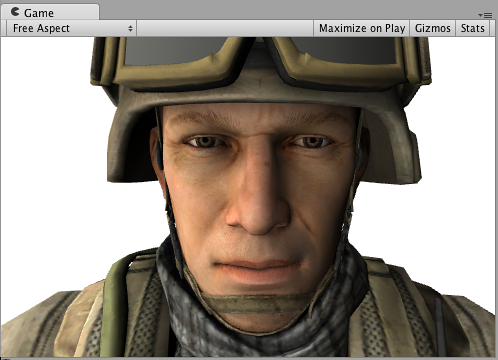
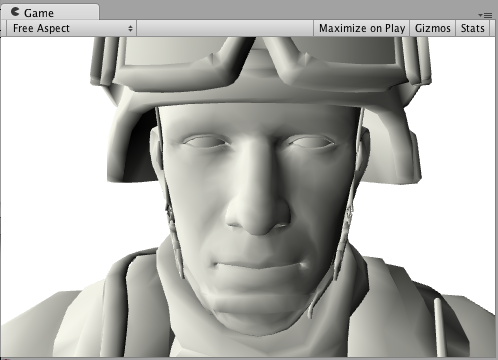
Toon Ramp
The following example shows a “Ramp” lighting model that uses a Texture ramp to define how surfaces respond to the angles between the light and the normal. This can be used for a variety of effects, and is especially effective when used with Toon lighting.
...ShaderLab code...
CGPROGRAM
#pragma surface surf Ramp
sampler2D _Ramp;
half4 LightingRamp (SurfaceOutput s, half3 lightDir, half atten) {
half NdotL = dot (s.Normal, lightDir);
half diff = NdotL * 0.5 + 0.5;
half3 ramp = tex2D (_Ramp, float2(diff)).rgb;
half4 c;
c.rgb = s.Albedo * _LightColor0.rgb * ramp * atten;
c.a = s.Alpha;
return c;
}
struct Input {
float2 uv_MainTex;
};
sampler2D _MainTex;
void surf (Input IN, inout SurfaceOutput o) {
o.Albedo = tex2D (_MainTex, IN.uv_MainTex).rgb;
}
ENDCG
...ShaderLab code...
Here’s how it looks like with a Texture and without a Texture, with one directional Light in the Scene:
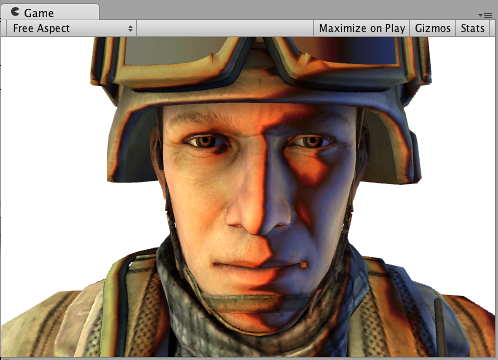
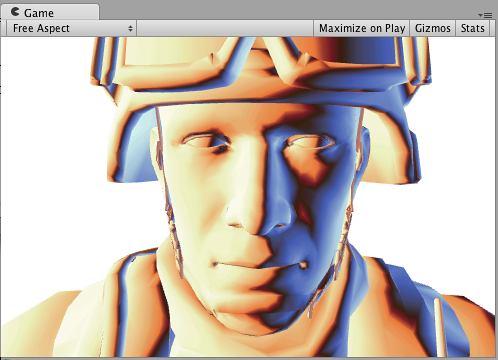

Простой Specular
The following example shows a simple specular lighting model, similar to the built-in BlinnPhong lighting model.
...ShaderLab code...
CGPROGRAM
#pragma surface surf SimpleSpecular
half4 LightingSimpleSpecular (SurfaceOutput s, half3 lightDir, half3 viewDir, half atten) {
half3 h = normalize (lightDir + viewDir);
half diff = max (0, dot (s.Normal, lightDir));
float nh = max (0, dot (s.Normal, h));
float spec = pow (nh, 48.0);
half4 c;
c.rgb = (s.Albedo * _LightColor0.rgb * diff + _LightColor0.rgb * spec) * atten;
c.a = s.Alpha;
return c;
}
struct Input {
float2 uv_MainTex;
};
sampler2D _MainTex;
void surf (Input IN, inout SurfaceOutput o) {
o.Albedo = tex2D (_MainTex, IN.uv_MainTex).rgb;
}
ENDCG
...ShaderLab code...
Here’s how it looks like with a Texture and without a Texture, with one directional Light in the Scene:

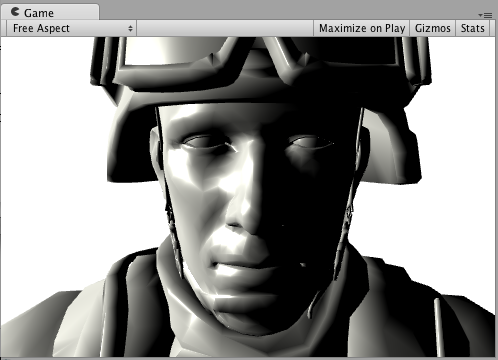
Custom GI
We’ll start with a Shader that mimics Unity’s built-in GI:
Shader "Example/CustomGI_ToneMapped" {
Properties {
_MainTex ("Albedo (RGB)", 2D) = "white" {}
}
SubShader {
Tags { "RenderType"="Opaque" }
CGPROGRAM
#pragma surface surf StandardDefaultGI
#include "UnityPBSLighting.cginc"
sampler2D _MainTex;
inline half4 LightingStandardDefaultGI(SurfaceOutputStandard s, half3 viewDir, UnityGI gi)
{
return LightingStandard(s, viewDir, gi);
}
inline void LightingStandardDefaultGI_GI(
SurfaceOutputStandard s,
UnityGIInput data,
inout UnityGI gi)
{
LightingStandard_GI(s, data, gi);
}
struct Input {
float2 uv_MainTex;
};
void surf (Input IN, inout SurfaceOutputStandard o) {
o.Albedo = tex2D(_MainTex, IN.uv_MainTex);
}
ENDCG
}
FallBack "Diffuse"
}
Now, let’s add some tone mapping on top of the GI:
Shader "Example/CustomGI_ToneMapped" {
Properties {
_MainTex ("Albedo (RGB)", 2D) = "white" {}
_Gain("Lightmap tone-mapping Gain", Float) = 1
_Knee("Lightmap tone-mapping Knee", Float) = 0.5
_Compress("Lightmap tone-mapping Compress", Float) = 0.33
}
SubShader {
Tags { "RenderType"="Opaque" }
CGPROGRAM
#pragma surface surf StandardToneMappedGI
#include "UnityPBSLighting.cginc"
half _Gain;
half _Knee;
half _Compress;
sampler2D _MainTex;
inline half3 TonemapLight(half3 i) {
i *= _Gain;
return (i > _Knee) ? (((i - _Knee)*_Compress) + _Knee) : i;
}
inline half4 LightingStandardToneMappedGI(SurfaceOutputStandard s, half3 viewDir, UnityGI gi)
{
return LightingStandard(s, viewDir, gi);
}
inline void LightingStandardToneMappedGI_GI(
SurfaceOutputStandard s,
UnityGIInput data,
inout UnityGI gi)
{
LightingStandard_GI(s, data, gi);
gi.light.color = TonemapLight(gi.light.color);
#ifdef DIRLIGHTMAP_SEPARATE
#ifdef LIGHTMAP_ON
gi.light2.color = TonemapLight(gi.light2.color);
#endif
#ifdef DYNAMICLIGHTMAP_ON
gi.light3.color = TonemapLight(gi.light3.color);
#endif
#endif
gi.indirect.diffuse = TonemapLight(gi.indirect.diffuse);
gi.indirect.specular = TonemapLight(gi.indirect.specular);
}
struct Input {
float2 uv_MainTex;
};
void surf (Input IN, inout SurfaceOutputStandard o) {
o.Albedo = tex2D(_MainTex, IN.uv_MainTex);
}
ENDCG
}
FallBack "Diffuse"
}